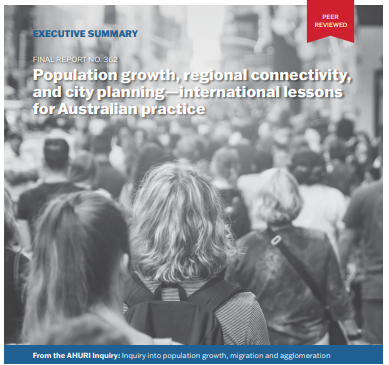Subscribe to keep up to date with the latest research, resources, news and events from The Deck.
You can also sign up to Q Shelter’s monthly newsletter, Home Matters.

Nicole Gurran; Ann Forsyth; Michael Darcy; Glen Searle; Caitlin Buckle; Sarah Zou
There is rising interest in Australia’s regions and their potential role as population centres and drivers of new economic activity, heightened by the COVID-19 pandemic but also reflecting long-term concerns about the problems of urban congestion and housing affordability pressures in Australia’s capital cities.
This report presents the findings of a research project examining how Australian urban and regional governance frameworks address economic and population growth using research evidence, international and Australian case study analysis and interviews with key Australian, state, and local government informants.
The range of international cases reviewed highlighted that there is no single model for regional intervention, planning, or governance, with examples ranging from small city jurisdictions through to the multinational network established by the European Spatial Planning Observatory Network (ESPON). Overall, successful regions have benefited from sustained investment and strategic planning over time.
Further, while recognising the economic benefits of agglomeration, the international case study review found that smaller centres can succeed by specialising in a particular economic strength or locational advantage if it is well connected to a larger city and/or regional network. Potential economic specialisations include higher education, research and technology; entertainment and tourism; personal services and wellbeing; amenity and lifestyle.